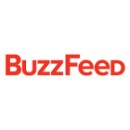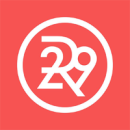In New York City, the long-standing media capital of world, a lot is happening.
Journalism is facing a new beginning — one driven by the convergence of content and technology as readers consume quickly, socially and on-the-go. We caught up with five NYC engineers behind this movement to find out what’s in store for the future of digital media.

BuzzFeed is redefining online advertising with its social, content-driven publishing technology. Built In spoke with Ashley Miller, Engineering Manager of the Infrastructure Group at BuzzFeed.
From a tech standpoint, what are some of the biggest trends in the media industry right now?
Video continues to be huge. We see it in the popularity of emerging brands like BuzzFeed’s Tasty videos.
What makes you excited about working in digital media right now?
So many things! The industry is evolving quickly. I love that a news organization like BuzzFeed News is breaking big stories. On the lighter side, I think we’ll see content cross over between platforms, like a short Snapchat video that becomes a longer web-series or post (and vice-versa).
How do you think tech will continue to disrupt the media industry over the next five years?
I think we’ll continue to experiment and find new ways of connecting with our audiences. BuzzFeed at its core makes content which helps others connect with people in their lives. I think we’ll see more interactive content. On the news side, I think we’ll see more big stories as digital security improves and it becomes safer for sources to anonymously send tips to news organizations.
What is your team focused on in 2017?
We’re working on helping our editors, engineers, and data scientists build great products. For my team, that means making data collection incredibly easy and reliable. We’re focused on making all of the data we collect available to our content creators. BuzzFeed is admirably open and data-driven across the company.
What are some of your team's best practices?
We work together as a team with an end-user goal in mind. After a project, we should point to an improved experience or a capacity we didn’t have before. For example, we might say ‘let’s make on-site shares available for an editor in real-time’, then we work out the technical details to get there. It makes it easy to see the big picture.
What's an important lesson your team learned in 2016?
We can make infrastructure beautiful, fast, and easy to use.

Refinery29 is a digital media source aiming to inform women on politics, entertainment, health and technology. The company publishes over 2,000 stories per month, across both written and video channels. Built In caught up with Ryan Catlin, Senior Software Engineer, Morgan McCrory, Software Engineer and Ilana Sufrin, Software Engineer.
From a tech standpoint, what are some of the biggest trends in the media industry right now?
User and computer-generated content has certainly become a growing trend. Many media companies have spent efforts on modernizing legacy systems and services. This also includes expanding platforms to utilize the global market, instead of singular markets. Furthermore, a growing number of people are getting their news through social media channels such as Snapchat, Instagram, and Twitter.
What makes you excited about working in digital media right now?
The availability of data from social content-sharing sites has provided unique opportunities for digital media. Millennials are continually getting their news more from social media instead of more traditional resources. Snapchat, Twitter, and Instagram are valuable resources that companies should tap into. It's exciting to be a part of a growing trend and providing more interactive outlets for people to be informed.
How do you think tech will continue to disrupt the media industry over the next five years?
More of the daily content people read and share will be automatically generated. It will take a smaller editorial staff to generate a larger amount of content.
People don't have to wait to get their news. They receive news directly to their pockets via push notifications, and they can subscribe to what's relevant to them.
What is your team focused on in 2017?
Improving the editorial process and flow for content-creators through our internal CMS, providing a more robust and meaningful shopping experience, as well as expanding the availability of our unique content to provide a platform for millennial-minded individuals.
What are some of your team's best practices?
Moving quickly and effectively is easy when everyone is confident that their team's code isn't liable to break anything. Coupling peering programming, test coverage, continuous integration, and on-demand deployments provides an exciting environment where new code can continually be released with a high-degree of confidence.
It's useful to standardize team processes, such as code review, to allow teams to focus on their priorities and communicate effectively. Taking advantage of code Linters, fixers, sniffers, and static-analyses allows a team to focus more on feature enhancement and optimization without being bothered about whitespace and formatting. Automated tools speed up development.
Finally, we try to leverage available open-source frameworks and tools instead of reinventing the wheel. Concentrating on a few select languages helps teams be more effective together. It's easier to maintain multiple services and tools if they're written in a common language allowing more developers to contribute.
What's an important lesson your team learned in 2016?
There is a large, knowledgable and vibrant community surrounding open-source software that provides a lot of useful tools and technology. It is important to stay involved in the tech community through open-source contributions and mentoring. This not only helps foster innovation but also keeps the team up-to-date on the latest trends and industry standards.

Thrillist is a men's digital lifestyle brand that spans topics across food, drink, entertainment, nightlife, dating and tech. Built In spoke with Ken Peltzer, CTO at Thrillist.
From a tech standpoint, what are some of the biggest trends in the media industry right now?
We're seeing a much wider adoption of newer web technologies, like React, in both user-facing sites and tools. Media companies are also embracing a more distributed model and are building teams around some fun new mediums, like chatbots and Amazon Alexa.
How do you think tech will continue to disrupt the media industry over the next five years?
Increased access to real-time insights and data-driven content production tools will allow digital media companies to respond to events and publish engaging content much quicker than they would have in the past.
What are some of your team's best practices?
We work very closely with our product team, and in particular, our program management team to stay organized and on-task. Making sure process is in place everywhere possible has made it much easier to scale, and keeps developers focused.
What's an important lesson your team learned in 2016?
Content needs to be able to live everywhere. From a development standpoint, it's important to think beyond web, and write code that can be flexible and reused as much as possible across many platforms.

AOL describes itself as a media technology company. On one side of things, the company’s subsidiaries include a number of content sites. On the other side, it holds a deep stack of adtech platforms. We caught up with James LaPlaine, SVP and Chief Information Officer at AOL.
From a tech standpoint, what are some of the biggest trends in the media industry right now?
Security is taking the top priority and getting new investment dollars, and rightly so, given the threats that email hacking, phishing, and ransomware pose to all media companies. Emerging trends like server-less computing (i.e. Amazon Lambda) are bringing higher order services to what was predominantly an infrastructure play. At AOL we believe AR/VR, machine learning and video increase the immersive storytelling of great content. RYOT, an AOL acquisition, is doing interesting things in the VR space.
What makes you excited about working in digital media right now?
First, the art of storytelling is what connects humans. Second, Mobile devices are nearly ubiquitous, allowing both consumption and creation of content. Never before have we had such access to massive computing power and the ability to capture content in the moment. When you combine this with the art of storytelling you increase connectedness, and all people want to be part of something.
How do you think tech will continue to disrupt the media industry over the next five years?
We're already seeing the amazing numbers of communities that are being created by the network effect of technology. People can now work, be entertained and engage in dialog completely unlimited by geographic and in some cases socio-economic borders. Effective use of data that amplifies this connectedness will win. High-quality content always seems to find an audience, and technology will make this faster to produce and easier to distribute, while incorporating community engagement.
What is your team focused on in 2017?
In 2017 AOL is focused on growing our audience, marching toward 2B monthly, global consumers by 2020. Our products will continue to leverage our technology and data to connect brands with their audience by telling the brand's story; produce engaging content in expanding platforms using sight, sound, and motion; and continue to build a tribe of connected humans who contribute their observations, stories, and inspiration.
What are some of your team's best practices?
We are building more accountability across the technology teams for the overall success of a product. Reminding ourselves that our consumer is not the person in the office down the hall, but rather the user reading our content, seeing our brand message, or contributing to our platform, that is who we are building for. We are indexing for speed, willing to take risks to try new product ideas, and using data to validate, test, and course, correct our roadmap.
What's an important lesson your team learned in 2016?
If we removed the bureaucracy of being a large company from the small teams that are working on a specific product or service they can get far more accomplished and produce better results. In 2016 we took steps to push more control to the brands, while improving the common platforms and services we offer to the entire portfolio. Our employees are more engaged and respond to market forces more quickly.
Know of a company that deserves coverage? Let us know or tweet us @builtinnewyork.






